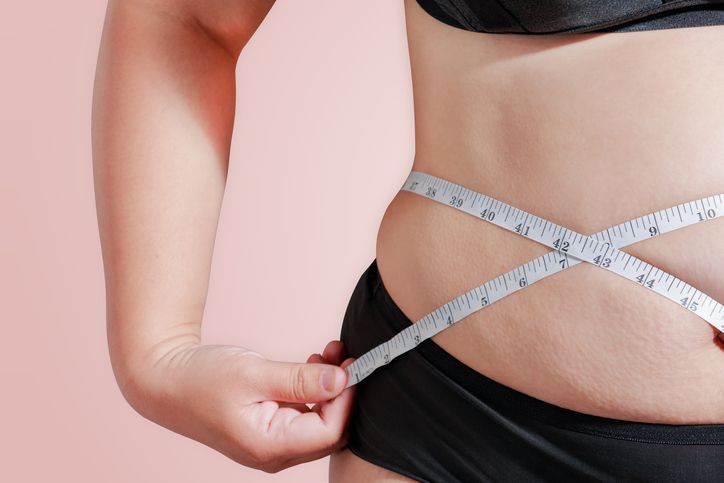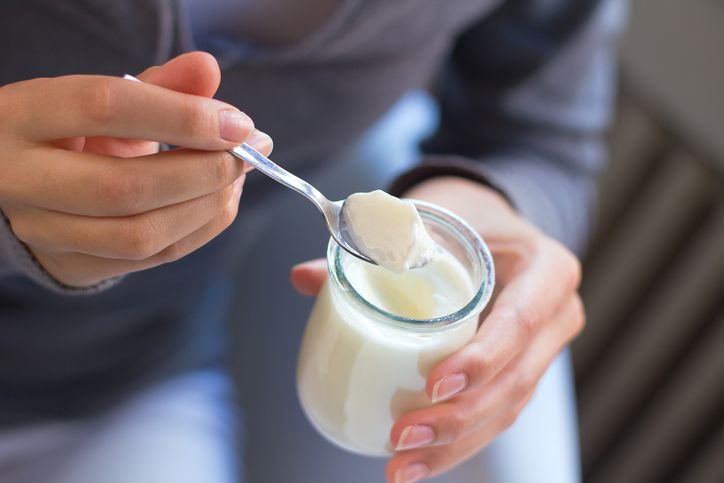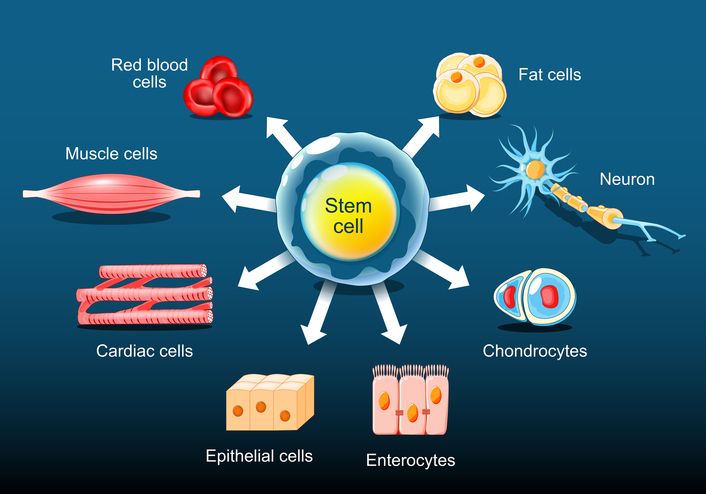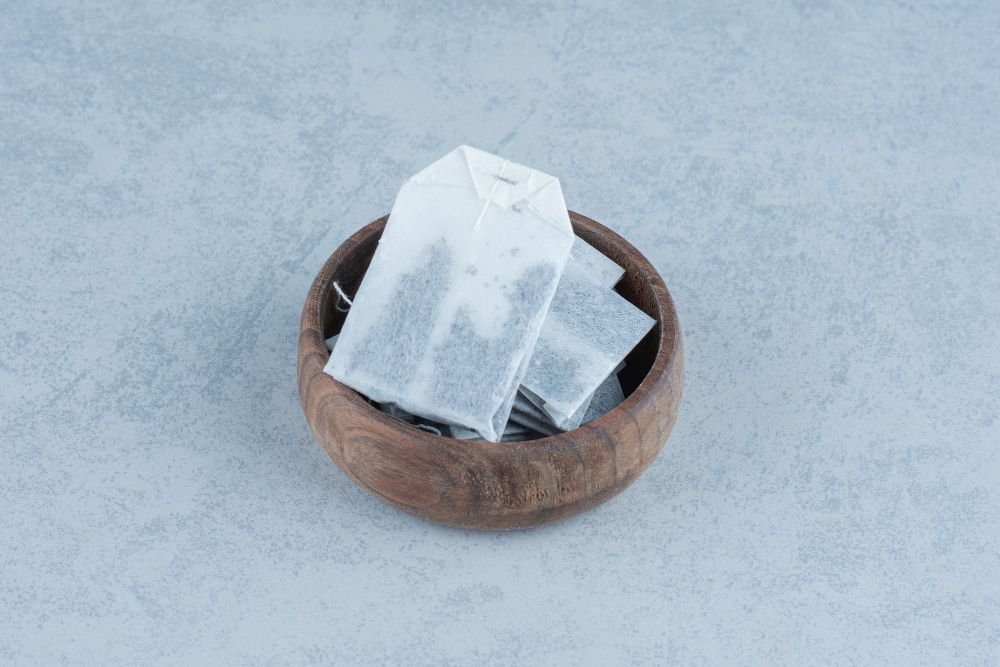

Book Now to Experience
S6 Body Sculpting Treatment
1 Minute Self-Registration
Date should not be before minimal date
Author: Leila Tan|Updated: 23 July 2024
People who want to slim down may think the scale's reading will decrease regularly as they work towards their goal. But when you begin losing weight and have been sticking to your diet and exercise routine, the problem comes when you want to continue losing weight. Although you put in a lot of effort, you are no longer seeing any progress on your weight loss goal, and that's what you'll most likely experience when weight loss plateaus happen.

1
Weight Loss Plateaus: Not your Highest Form of Flattery

You may have hit a weight loss plateau if you haven't lost any body weight even though you're still exercising and eating well, or even if you're doing more of both. Your body needs time to get used to its new surroundings before it can grow any further, so be patient. Even though this might make you feel down, you shouldn't let it stop you from moving forwards.
The American Journal of Clinical Nutrition says that dieting stops helping people lose weight after six months. This is most likely because people stop following their diets. Many people may feel like all their hard work over the past few months has been for nothing, and this news may be a crushing blow. You can't solve the problem well until you know why weight loss stops moving forwards.


2
How does Weight Loss Plateaus Happen?

Weight loss plateaus occur when you begin losing weight. It can be caused by a variety of factors, including an increase in stress, a change in diet or exercise routine, a plateau in the body's ability to adapt to weight loss efforts, dehydration, water retention, a slower metabolism as a result of eating less or working out harder, hormonal imbalances, or even illness.
Furthermore, our bodies may develop resistance to the same diet and activity routines over time. This means that with each attempt, we make less progress. To break through weight loss plateaus and continue losing fat, you must first determine what is causing the problem and then address it. It's also necessary to make changes, such as boosting your exercise or modifying your eating habits to maintain stable weight. Let's look into some of the main causes:
Changes in food intake
In order to use energy, you need to eat calories. If you eat less, your metabolic rate will naturally slow down. If you don't eat enough calories or stay on a low calorie diet for too long, your body and metabolism may act in strange ways. A small change in how much food you pour into a bowl or spoon onto your plate is unlikely to affect your body weight or height, but a big change may be too much for your body.
Dieters often stay on calorie deficit by too much. When you go from eating, say, 2,500 calories a day to eating only 1,000 calories a day, it is quite a shock to your body. At first, glycogen stores are used up and some fat is lost. This is why some weight is lost at first, but your body starts to think it's starving and goes into starvation mode. At this time, the body slows down its metabolism in an attempt to hold on to fat, which causes weight loss plateaus. Anyone trying to lose fat should eat at least 1,200 calories a day to keep their metabolism going.
Dehydration and water retention
According to a number of studies, being dehydrated can make it more difficult to shed pounds and burn calories. Your efforts to lose weight will be hampered if you do not drink enough water each day because this will prevent your metabolism from operating at its optimal level and will prevent your digestive system from doing its function in an effective manner. In addition to that, you are probably experiencing feelings of lethargy and finding it difficult to maintain your energy levels throughout the day, especially if you are doing other practices like intermittent fasting.
On the other hand, when fat is removed, the adipose cell may take on more water to maintain structural integrity. Cortisol is the hormone in charge of freeing up resources so that other cells that require energy can obtain it from fat cells. When the body is under high amounts of stress, such as when dieting, these might imitate the action of Aldosterone, and Aldosterone is the hormone in charge of water weight management.
If your water levels are too high, Aldosterone is produced in lower amounts, allowing you to store less, and this is why drinking lots of water can give you a 'dry' appearance - you convince your body that water is freely available and that it doesn't need to store large amounts, and when water levels are low, you retain more.
Hormonal or Insulin imbalances
As mentioned above, hormonal abnormalities are one of the main reasons that contribute to a weight loss plateau. For instance, aside from Cortisol and Aldosterone, reduced levels of Testosterone in men are associated with decreased lean body mass and increased body fat. It's possible that elevated levels of Oestrogen in both men and women lead to weight gain. Also, your body's production of HGH (human growth hormone), which helps with weight loss, naturally decreases with age. Producing less HGH makes weight loss more challenging.
Aside from that, Insulin is the hormone that should maintain a healthy amount of glucose in the blood. You may not realise it, but insulin sensitivity and resistance are both factors in how well you lose weight. When your cells are very resistant to insulin, glucose is not eliminated from the blood as efficiently as it should be. When you exercise more, your body becomes more sensitive to the hormone insulin, which means your insulin resistance should go down (which means you process glucose more efficiently). However, if that isn't the case, it may be time to consult a medical expert on how to proceed.
Read More

3
How Long Does a Weight Loss Plateau Last?

If you lose weight quickly, a weight loss plateau can occur within two weeks or within a month. According to some research, a plateau occurs after 6 months. If you've been feeling stuck in a rut for the past four weeks, it's time to look into your weight loss plateau. Here are a few signs that you will pick up if you have struck the plateau lottery:
You felt you had cut out too much food from your palette.
Extreme calorie restriction is a common cause of weight loss plateau. When we drastically reduce our caloric intake, we see significant results initially (maybe the first or second time we do it), but those results gradually diminish over time. Because our bodies adapt to a "famine" state and stop using fat as fuel, this is what happens. Rather, it will begin to do what our bodies evolved to do in times of peril: store fat for later use.
You may wonder is it possible for fat to be used as fuel in your body? Yes, but it will also make every effort to keep as much fat on board as possible. The situation resembled a zero-sum game in the end. Meanwhile, your body eats away at muscular tissue to use as energy. Since your resting metabolic rate has decreased, you now require even less food than before.
You felt that you could sleep the whole day off.
All of the most fundamental chemical reactions in our bodies that generate energy require minerals from food, such as B vitamins, iron, folate, choline, zinc, iodine, and so on. We are likely not obtaining enough nutrients if we do not consume enough calories, which causes us to feel exhausted and run down.
A multivitamin may be able to help with this for a while, but it will eventually tire us down. You're frequently unwell, cold, losing hair, or having irregular periods. All of this suggests that a shortage of nutrients, protein, and calories may be detrimental to a major biological system. These symptoms should alert you to the fact that you need to eat more immediately.
You no longer feel hungry.
Some dieters take a lack of food as a sign that their diet is working. The longer we choose to disregard those cues, the less likely our brain will bother to convey them. If you haven't eaten in more than 5 hours and feel sick or in pain when you eat, you may have reached a plateau. Imagine you just get up from a long period of sitting, this will likely leave you with tight and aching muscles.
When you go without food for an extended period of time, your digestive system, which is essentially one long bunch of muscles, can also start to feel crampy and sore. If you can't eat at regular intervals, attempt to follow your diet plan every 4–5 hours, or several little meals throughout the day.


4
4 Ways to Tackle When Weight Loss Plateaus Occur

You can still make improvements even if you aren't losing weight. You haven't strayed from the correct path yet. The numbers on the scale aren't reflecting that just yet. Here's the bad news, though: if you don't make any adjustments, you'll continue to hit a wall. That's because, as we've already established, your body adapting to your new eating habits or a necessary shift in your diet are the most common reasons for weight loss plateaus.
Only when the source of the plateau is a new player's advancement will it disappear on its own. Which means that the first weight loss was due to the consumption of glycogen stores, which contributed to the loss of water weight. Once your body adjusts to the new routine, you'll start to see more gradual results in your weight reduction. The few methods below can help you to cope with this tough period:
Modify your diet.
Modifying your diet and fitness routine is one of the most successful healthy habits to break through a weight loss rut and continue making progress. Your first step should be to evaluate your current eating habits and search for any possible trends or imbalances that may be contributing to the stagnation you've been experiencing. Ensure that your protein intake, fibre intake, healthy fats, and complex carbohydrates are added into your diet to fuel your body without overindulging in unhealthy foods that are high in empty calories but have no nutritional value.
In addition to this, you should make sure that your food is well-balanced and that it has all of the macronutrients and vitamins that are necessary for your body to function correctly. You can also try breaking through your plateau by experimenting with alternative meal regimens, such as different portion sizes or try other diet plan like intermittent fasting and see if you would reap more health benefits on your weight loss journey.
Keep your stress hormones stable by adopting a stress management program.
In order to overcome a stalemate, you may want to implement some additional lifestyle modifications, such as decreasing your stress and making sure you get enough sleep every night. The stress-reducing effects of activities like meditation, yoga, and tai chi, as well as more conventional methods like deep breathing exercises, can be used to counteract the negative effects of stress hormones on weight reduction. Don't just do these things sometimes; make them part of your daily habit. Cut down your alcohol intake and get between seven and nine hours of sleep every night. Improvements in metabolic function and sustained weight loss have been linked to this quantity of sleep.
Try to get at least eight hours of sleep per night. Put away electronic devices like your TV, smartphone, and tablet and get some sleep. Sleep loss alters hormone levels, boosting hunger-inducing ghrelin and reducing satiety-inducing leptin, which can be tremendously helpful to your mental health. When people are tired, their brains tell them to eat more sugary and starchy meals.
Adjust your physical activity.
One more thing to think about is changing up your physical activity. To begin, you should incorporate more challenging exercises into your routine and increase the number of times you execute each activity in order to work up a sweat.
By switching up the exercises you undertake and the level of difficulty at which you perform them, you can keep your body from hitting a plateau from boredom or adaptation. Keeping your body active like this is a great way to stay healthy. You can also consider including high-intensity interval training (HIIT), swimming, or jogging into your usual workout programme.
Consider weight loss treatment.
Keeping up with a strict workout plan and keeping careful track of calorie intake can take a lot of time, and it can be especially hard for your weight loss journey when we hit a weight loss plateau. Because everyone's body is different, it's not surprising that many ways to lose weight don't work for most people. This was talked about in the section before this one.
So, the difficulty and physical conditions are different for each person, and some people can't avoid rebounds if they use the wrong weight loss efforts. The best way to do this is to get rid of the fat cells for good, and CoolShaping Fat Freezing Treatment can help to get rid of weight loss plateaus faster than ever.

Book Now to Experience
S6 Body Sculpting Treatment
1 Minute Self-Registration
Date should not be before minimal date

5
Get Rid of Weight Loss Plateau with New Beauty CoolShaping Fat Freezing Treatment!

By adapting the medical-grade technology from Harvard Medical School, which employs the revolutionary cooling cryolipolysis technique, this method uses cooling energy at freezing temperatures ranging from -10oC to -15oC to freeze the undesirable fat cells that have accumulated in your body. Freezing fat cells causes the cells to break down and crumble as trash, which is naturally flushed away by the metabolism, toning and shaping your dream figure.
This treatment is great for persons who wish to lose weight in a way that is not only effective but also safe, as well as those that are stuck in weight loss plateau for long and might need assistance to burn fat faster. Furthermore, rapid weight loss might result in cellulite and loose skin, but you will not have to worry about that since subcutaneous fat layers will gradually thin over one to two months after the treatment, which gives the skin enough time to acclimatise and maintain its firmness.
As fat freezing is a tried and true technology for a speedy and safe 20% fat loss with no negative effects on health, there is no recovery time or anaesthesia required for CoolShaping Fat Freezing. In addition, you won't have to take pills or crack your head for more plans to lose weight faster if you go for cryolipolysis.


6
Conclusion

A temporary halt in losing weight isn't the end of the road; it's just a new challenge that stimulates you to come up with a revised weight loss plan, so you can proceed to move on to your weight loss goals. However, a typical diet won't create a lasting impact because it's affected by variables other than what you consume. Therefore, treatments for weight reduction can be effective to provide assistance and support to help you through the ups and downs of your weight loss journey, as well as to aid weight loss speed if you find your weight loss stalls a little too long.
FAQ
How can I break through my weight-loss plateau fast?
A planned cheat day might occasionally shock your body into breaking through the plateau and returning to better body composition, so your weight maintenance or weight reduction mode work better. It can also provide a mental respite from being so careful with what you eat, or you may try various fat loss treatments to more effectively address weight reduction plateaus.
Is it normal for people on diets to experience plateaus?
Inevitably, anyone trying to shed extra pounds will hit a point when further progress is neither possible nor desirable. The vast majority of people who maintain a healthy diet like low calorie diet and regular exercise routine are still taken aback when they experience this. When your calorie intake equals your calorie expenditure, you hit the weight loss plateau, where you may feel stagnant or even weight gain. If you want to achieve more in losing weight, you need to do one of two things: either raise your activity level or consume fewer calories.
How effective can CoolShaping Fat Freezing treatment help with weight loss plateau?
Although other weight loss approaches, such as weight loss diet, may initially result in rapid weight loss, your metabolism will eventually slow as your body adjusts to the new normal. Because your metabolism has slowed, you are at risk of maintaining weight loss results or losing more weight unless you drastically restrict your food consumption once more. CoolShaping Fat Freezing in this scenario targets fat in specific body locations, freezing fat cells to cell death and then removing them via the lymphatic system, thereby toning and contouring your dream figure.
Is the equipment used for this cryo-lipolysis treatment certified and safe?
Authentic manufacturer1 instruments are used to ensure customers' safety and quality. Following treatment, there may be some slight redness and irritation in the treated area. The condition usually goes away within a week.
Do I need to make an appointment before paying a visit?
Sign up for an appointment using the online registration form; after you arrive at the clinic, an experienced consultant will utilise the data you provided to determine your body type, do a fat analysis, and make recommendations based on your current diet and way of living.

Book Now to Experience
S6 Body Sculpting Treatment
1 Minute Self-Registration
Date should not be before minimal date
Recommended Articles
COPYRIGHT© NEW BEAUTY MANAGEMENT LIMITED 2025. ALL RIGHT RESERVED.




